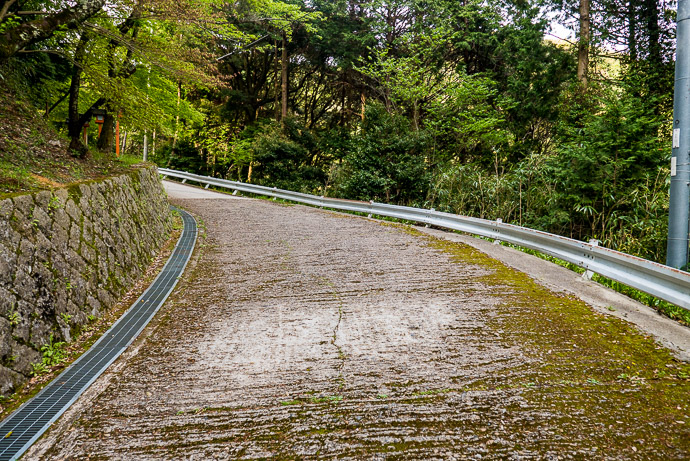This post picks up on last month's “Century of Wazuka Climbs, Part 1”, about what was for me an epic day of beauty and climbing, and some trials and tribulations. “Part 1” ended with a delicious lunch, so this part picks up from just after.
So, after lunch, I made my way south to the deeper, even-less populated mountains of the Wazuka region of southern Kyoto Prefecture.
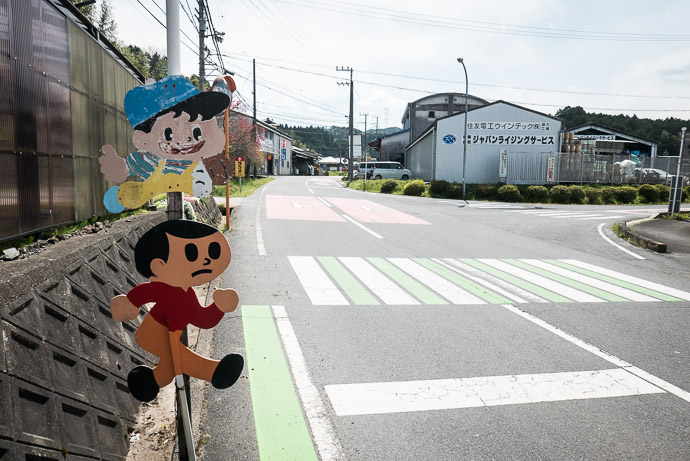
Panasonic LX100 at an effective 24mm — 1/640 sec, f/5.6, ISO 200 — map & image data — nearby photos
Last Sign of Civilization for a While
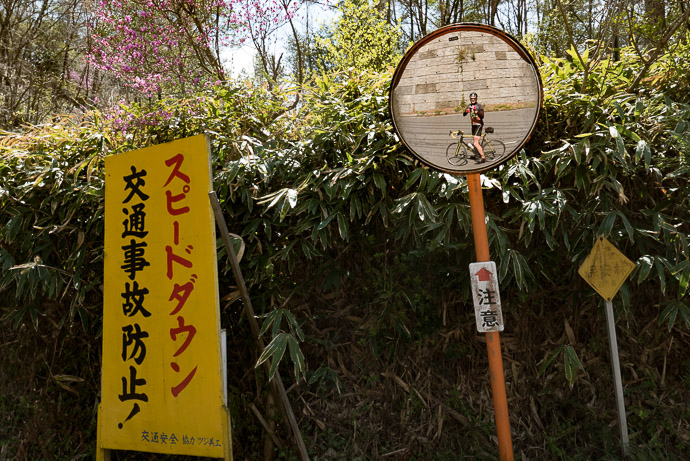
Panasonic LX100 at an effective 29mm — 1/160 sec, f/5.6, ISO 200 — map & image data — nearby photos
Selfie
at the top of a small climb

Panasonic LX100 at an effective 24mm — 1/640 sec, f/5.6, ISO 200 — map & image data — nearby photos
Defenders of the Traffic Rules!
I thought that I had posted these guys before, but it seems that I didn't. It's the same intersection as this photo from “Tea Tour with Manseki and Gorm” last year.
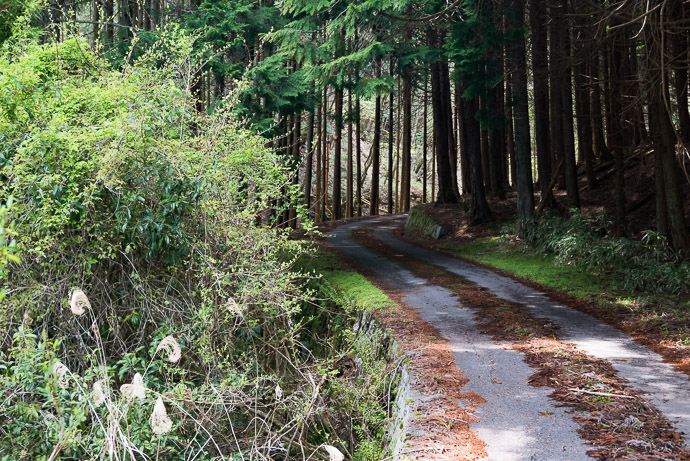
Panasonic LX100 at an effective 60mm — 1/125 sec, f/2.8, ISO 400 — map & image data — nearby photos
Lovely, Little-Used Road
This mild climb was really pleasant, but it seems to be little used, as only 30 Strava users have ever ridden it in the direction I went (300 have used it in the other direction, which still seems like a small number for such a lovely road).
Perhaps so few folks use this road because a nearby alternate route goes near a scenic spot.
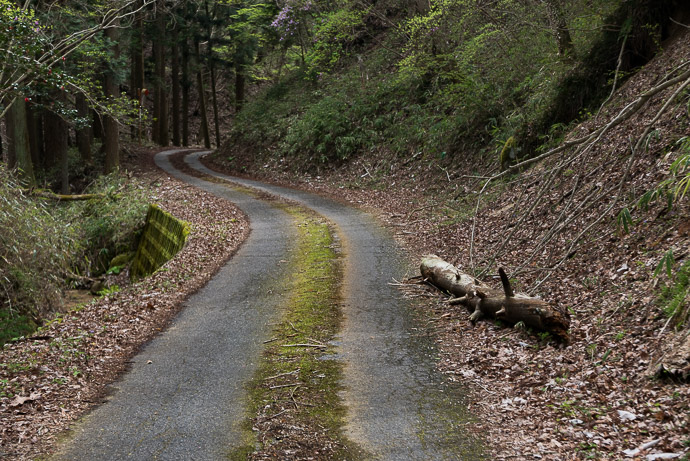
Panasonic LX100 at an effective 75mm — 1/125 sec, f/4, ISO 200 — map & image data — nearby photos
Just Lovely
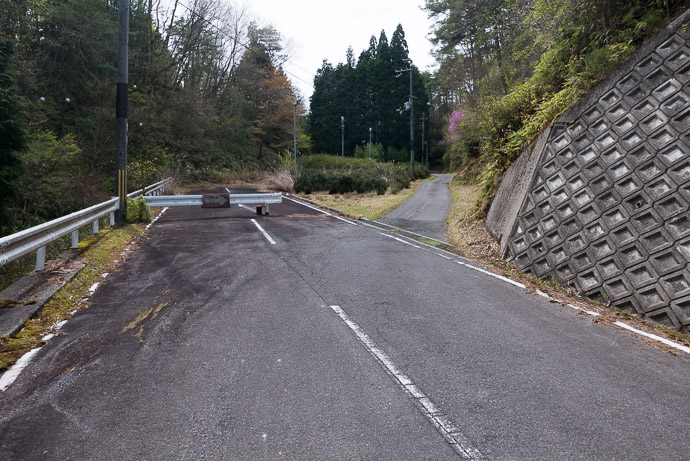
Panasonic LX100 at an effective 24mm — 1/250 sec, f/5.6, ISO 200 — map & image data — nearby photos
“Road Narrows”
The nice wide road just stops, with a narrow road that looks like an afterthought trailing away to the right. This kind of thing is seen every so often, when modern repair work is done to a very old, narrow road. The thought, I'm assuming, is that if they're going to redo the road for whatever reason, they may as well put in a modern two-lane road while they're at it. Over the decades, after enough of the road needs attention of some sort or another, they'll have gotten around to making the full length nice and wide. Until then, it comes in little spurts.
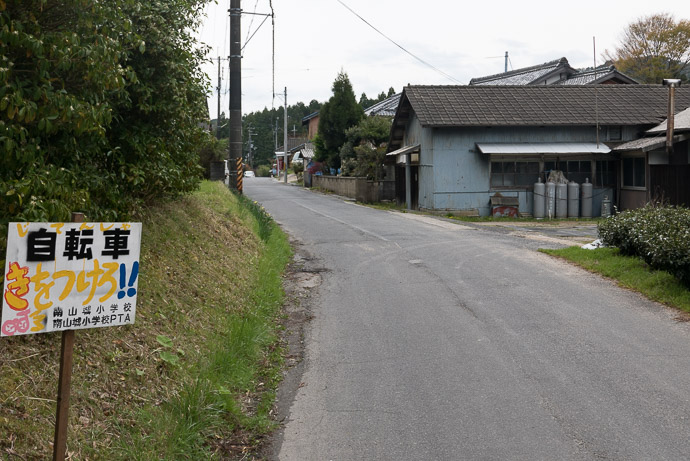
Panasonic LX100 at an effective 43mm — 1/200 sec, f/5.6, ISO 200 — map & image data — nearby photos
“Bicycles”
“Let's be Careful!!”
It's not clear to me whether “Bicycles” is the subject or a direct object (that is, it's not clear whether this is admonishing cyclists to take general care, or cautioning drivers to watch out for bicycles). Actually, the way it's written is clearly directed at children, so perhaps it's warning children to watch out for bicycles, or maybe a clever way to get (Japanese-native) cyclists to subconsciously worry that children might be present. I dunno.
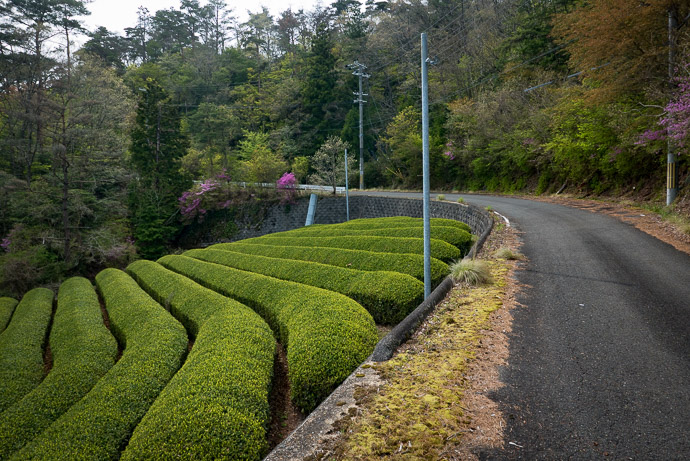
Panasonic LX100 at an effective 24mm — 1/125 sec, f/5.6, ISO 200 — map & image data — nearby photos
Skirting the Top
of a green-tea field
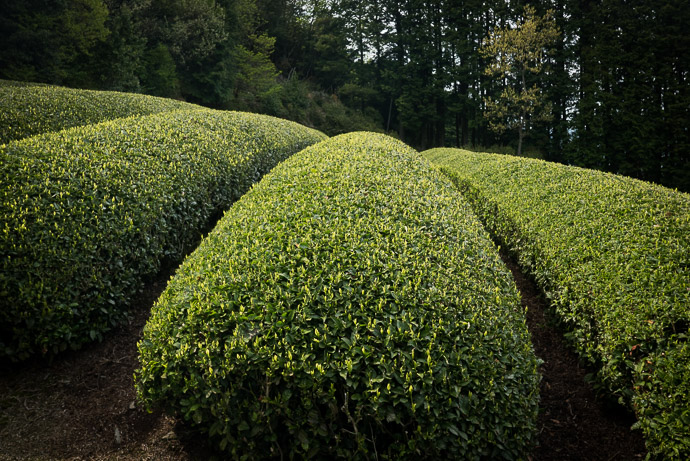
Panasonic LX100 at an effective 29mm — 1/125 sec, f/5, ISO 200 — map & image data — nearby photos
Roundish
Green-tea bushes are always this roundish shape. I don't know why, but I suspect it's to increase the surface area, and hence the yield. Some years ago I made my first visit to a great-tea field while working with Lake Biwa Tours as they considered a tea-themed tour. During that visit, the bushes were being trimmed...
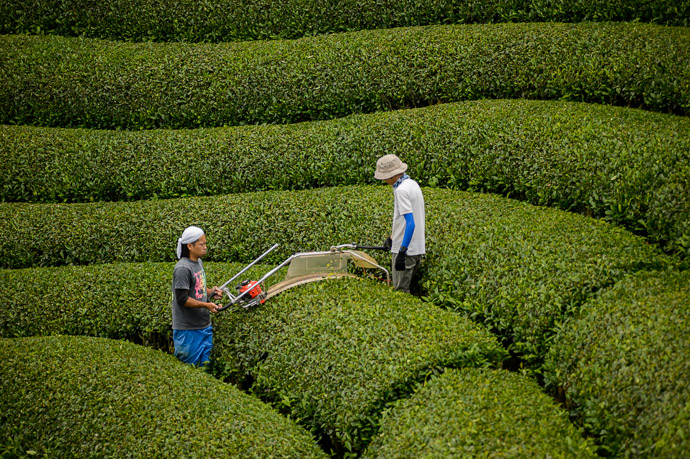
Nikon D4 + Voigtländer 125mm f/2.5 — 1/640 sec, f/2.5, ISO 100 — map & image data — nearby photos
Trimming
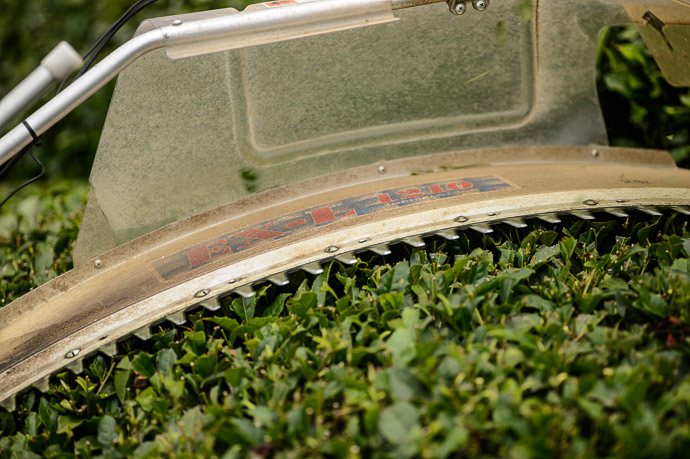
Nikon D4 + Voigtländer 125mm f/2.5 — 1/320 sec, f/2.5, ISO 100 — map & image data — nearby photos
Curved Blade
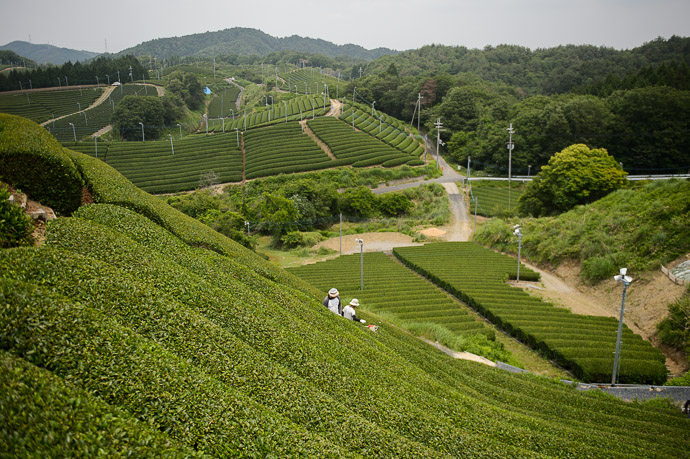
Nikon D4 + Nikkor 24-70mm f/2.8 @ 29mm — 1/400 sec, f/2.8, ISO 100 — map & image data — nearby photos
Lots to Do
Back to my ride, after a lot of undulation the road finally pitches down down down at roughly 8%, in two thrilling parts of three and two kilometers, respectively. The first part, the Dosenbo Descent, breaks out of the forest and into sweeping vistas of gorgeous tea fields. Unfortunately, the camera on my bike is lower to the road, so it doesn't catch the lovely vistas, but for what it's worth, here's the descent:
After a short break with a little climb, the road again plummets down toward sea level via the Kiya Descent. It's a more-standard twisty mountain descent:
I had fun with both, not pushing too hard but hoping to do well. Ended up getting the KOM on both. 🙂

Panasonic LX100 at an effective 25mm — 1/160 sec, f/5.6, ISO 200 — map & image data — nearby photos
Pretty Wisteria
near the start of the Yaruki Jizo climb
After 15 minutes of riding into the wind, I came here, to the start of the full Yaruki Jizo climb.
I've been meaning to blog about it since first visiting it in March, but like so many things, have not gotten around to it. In short, it's really brutal.
It starts off fairly flat:
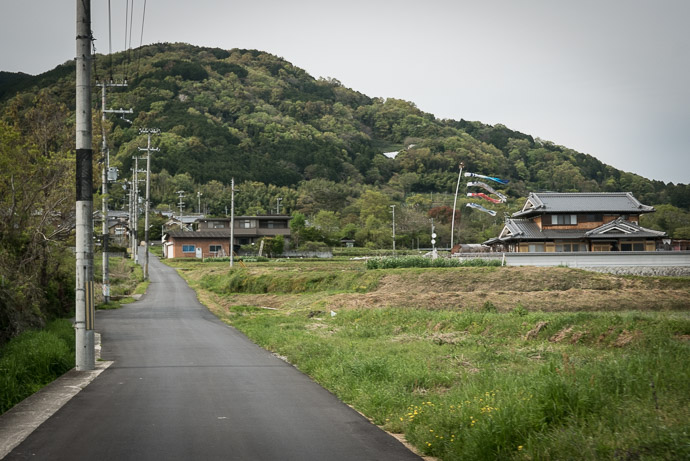
Panasonic LX100 at an effective 44mm — 1/320 sec, f/5.6, ISO 200 — map & image data — nearby photos
Approaching The Mountain
The koinobori flying at the house show the strength of the wind
Thankfully, the wind didn't bother in the mountain, but I had other things to worry about. My only goal was to be able to complete it.
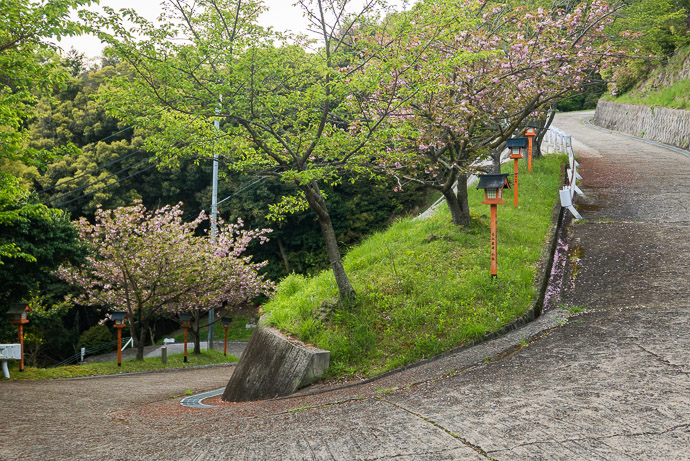
Panasonic LX100 at an effective 41mm — 1/125 sec, f/3.5, ISO 200 — map & image data — nearby photos
Representative Hairpin
“only” 19% at this point
The road surface is not nearly as bad as the 32%-max climb at Kyoto’s Ushio Kannon Temple, but it's got its issues, especially toward the top where it's deeply-cross-rutted cement.
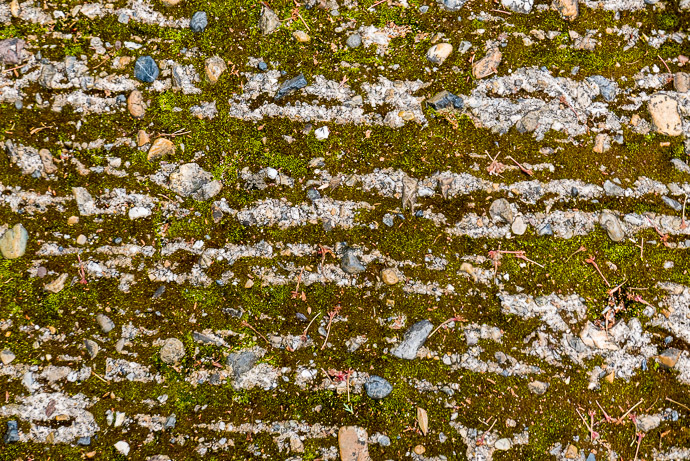
Panasonic LX100 at an effective 67mm — 1/125 sec, f/2.8, ISO 640 — map & image data — nearby photos
Moss Growing
in the ruts

Panasonic LX100 at an effective 24mm — 1/125 sec, f/1.7, ISO 200 — map & image data — nearby photos
For Scale
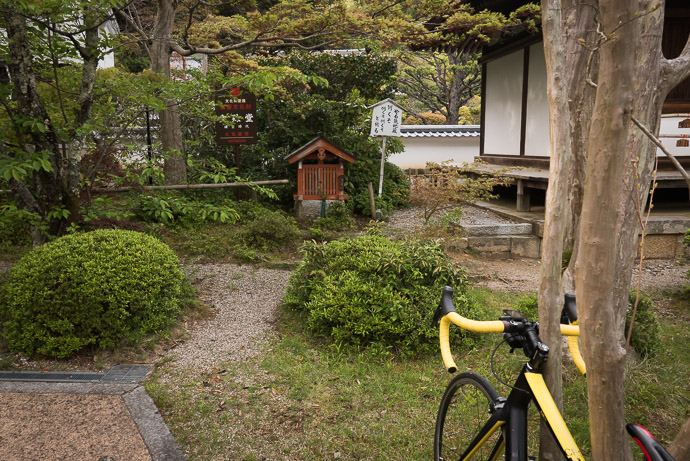
Panasonic LX100 at an effective 24mm — 1/125 sec, f/4, ISO 200 — map & image data — nearby photos
At the Top
The Yaruki Jizo (やる気地蔵) is in the background
at the Kaijusenji Temple (海住山寺)
I'll write about it more later, but I like this climb in particular because of its namesake Yaruki Jizo, which very roughly translates to “guardian of motivation” or “deity of fighting-spirit”. You need what it offers in order to get there.
And if that's not enough motivation, you also have a big eggplant:
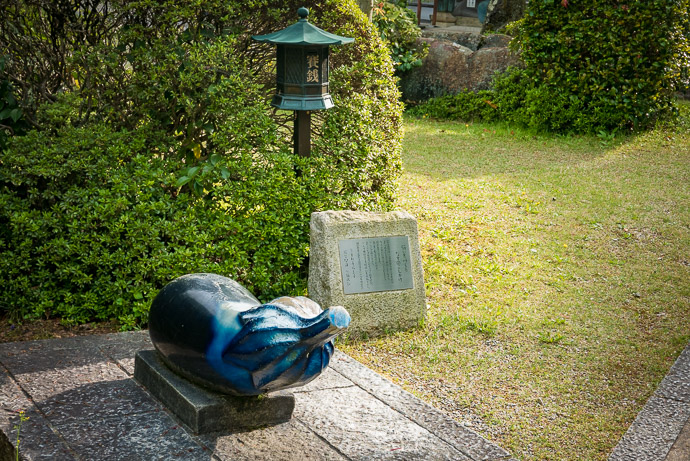
Panasonic LX100 at an effective 49mm — 1/125 sec, f/4.5, ISO 200 — map & image data — nearby photos
Big Eggplant
It's grindingly slow, but here's a video of the climb:
Happy to complete that, I made my way to the last big climb, which slowly ramps up over eight kilometers, to end with three kilometers at 9%. I took it slowly, stopping for photos and to rest.
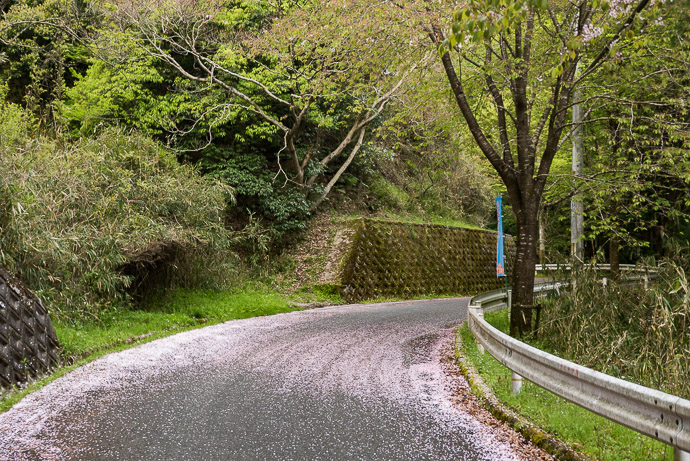
Panasonic LX100 at an effective 52mm — 1/100 sec, f/2.8, ISO 320 — map & image data — nearby photos
Early, Mild Part of the Climb

Panasonic LX100 at an effective 46mm — 1/100 sec, f/2.6, ISO 500 — map & image data — nearby photos
Getting Steeper
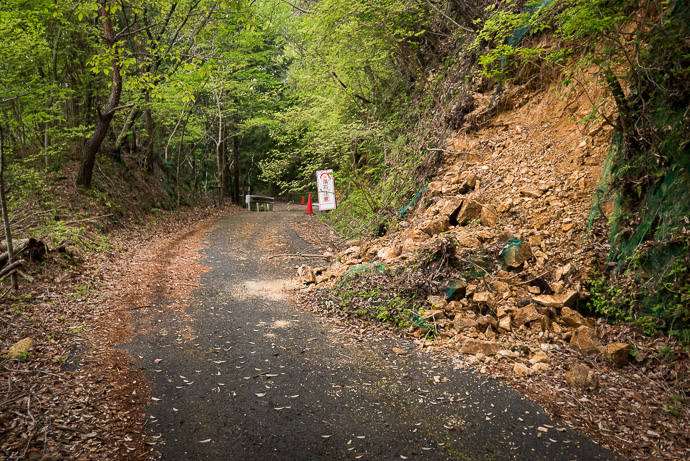
Panasonic LX100 at an effective 35mm — 1/125 sec, f/2.3, ISO 500 — map & image data — nearby photos
Watch Out
Once you reach the top there are two false descents leading to two small climbs, then finally a long, lovely descent to the river path that leads to Kyoto.
The last 34km (21mi) were flat, but into a strong headwind, so that wasn't fun, but I was just happy to have survived.
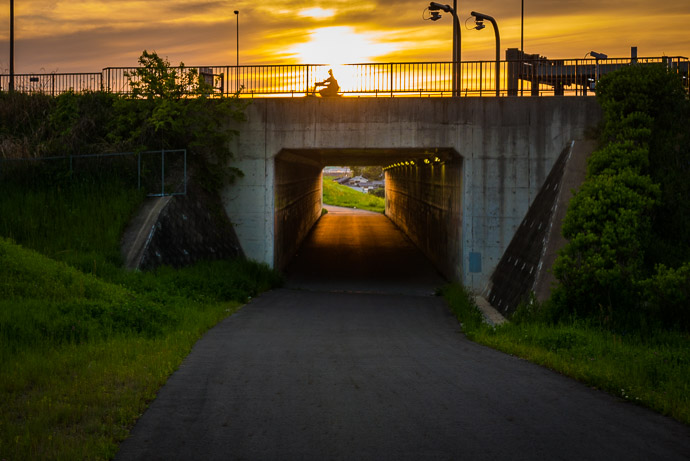
Panasonic LX100 at an effective 75mm — 1/125 sec, f/4, ISO 200 — map & image data — nearby photos
Heading Home
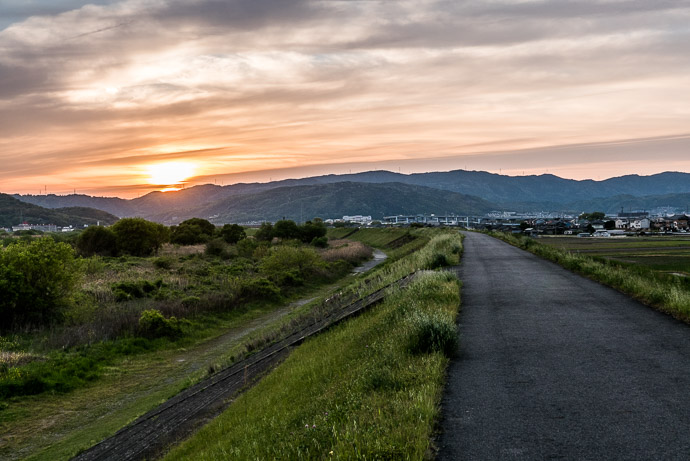
Panasonic LX100 at an effective 47mm — 1/125 sec, f/5, ISO 200 — map & image data — nearby photos
Sunset
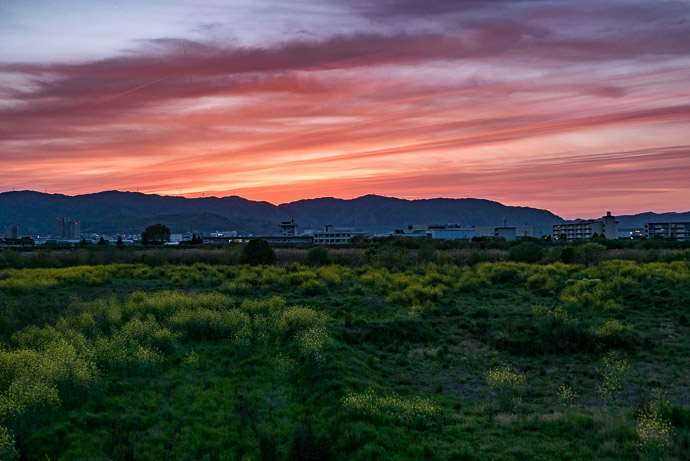
Panasonic LX100 at an effective 37mm — 1/125 sec, f/3.2, ISO 200 — map & image data — nearby photos
Lovely
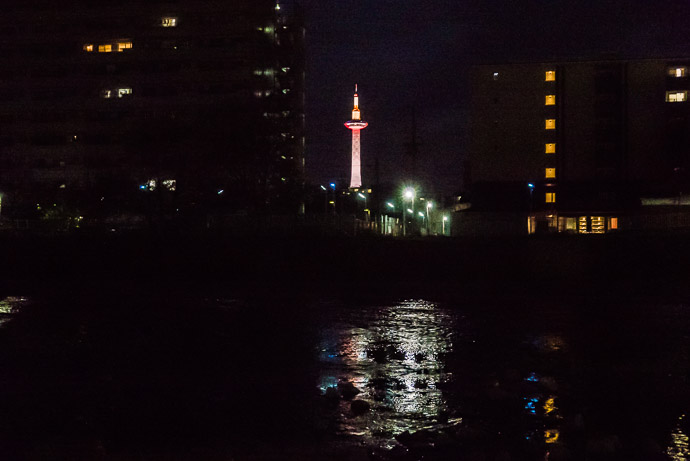
Panasonic LX100 at an effective 50mm — 1/125 sec, f/2.7, ISO 2000 — map & image data — nearby photos
Back in Kyoto
Despite the cramping issues discussed in the first blog post, I was very happy to have completed the entire route I had planned. 100+ miles with 3,500m (11,500') of climb. I was satisfied.
There's also a relive.cc video of the ride.
